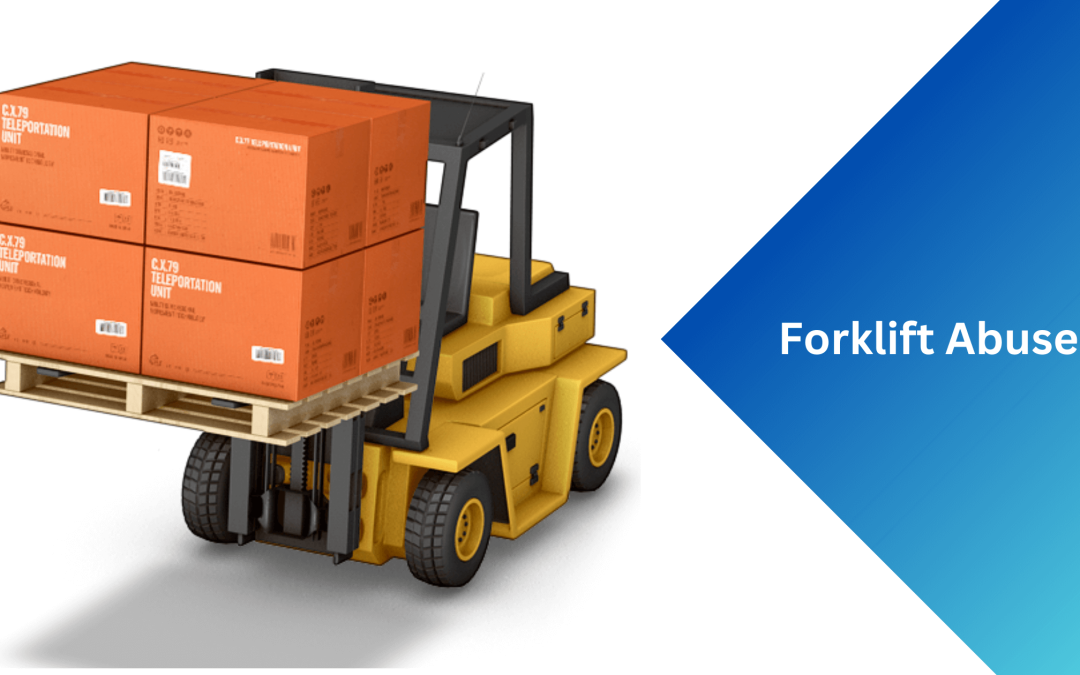High Costs Associated with Forklift Abuse
When considering forklift abuse, it’s important for forklift operators to understand that while forklifts aren’t inherently dangerous, they can pose risks if safety protocols are not diligently followed. These powerful machines, if mishandled, can lead to costly damages within your facility. We’re going to discuss a few common causes of forklift abuse that leads to equipment and facility damage. Let’s begin.
What is Forklift Abuse?
Forklift abuse is when the normal threshold of equipment wear and tear has been exceeded. There are a couple of ways to evaluate forklift abuse. One are the ‘sign’s or the carelessness of forklift abuse, and the second come with the use of the forklift during the working shift.
Carelessness or Signs of Forklift Abuse
These are the most easily spottable signs of forklift abuse. When you notice some of these signs, you will clearly know that unsafe practices are occurring and your risk of costly forklift accidents are likely.
- Tire marks on the floor. This can happen both during the workday or a little playtime. Driving too fast and slamming on the brakes can cause tire marks. But so can the little donuts that they do when having a little fun. You see these marks, forklift abuse is abound!
- Either dents or chunks of overhead doors, door frames or corner walls. Getting a little too close due to high speeds or simply impatience is the cause for these costly mishaps.
- Forks are bent or small pieces are missing. You know that has to be a pretty good size hit in order to bend or take chunks out of forks. However, piecing the story together and knowing who caused it can be challenging.
- Missing paint, gauges, scratches or impacts. A sure sign that forklift abuse is occurring largely due to wanting to go ‘too fast’.
Forklift Abuse During the Work Shift
There are other causes of forklift abuse that takes place during the forklift operator’s shift. Some are caused by the driver, and some are not. What are those?
Inadequate floor conditions: poor flooring conditions come in a variety of ways, these can include potholes in the concrete, large cracks or humps that when the forklift hits it, creates an impact on the forklift as well as the driver. But other inadequate floor conditions can also include debris left on the floor and the forklift operator drives over it causing internal damage to the forklift.
Driving at Maximum Speed: It’s every forklift driver’s dream to operate the forklift at maximum speed, just to see how it goes. But a forklift is not designed like a car, as a forklift is made to carry heavy object in the front of the forklift. Even though they know it because they have been learned all about it with hands on training, the urge still exists and attempts are still made.
Using the Wrong Equipment for the Task: Even though the operators are aware of the tonnage of the forklift and what the tag says is the maximum weight that it can carry, laziness still prevails. Forklift operators many times will just ‘hop on’ a truck because it’s close. Or it’ll only take a minute. Accidents frequently happen as a result.
What Can Be Done to Avoid Forklift Abuse?
A forklift safety system contains the technology necessary to restrict many of these forklift abuses from occurring.
- Forklift Access Control – If you are not certified, you cannot operate a forklift
- Impact Detection – Monitoring, tracking and analyzing the impacts and where they are occurring will help to identify hot spots. However, if you want to know who is driving during the time of impact, you can turn on the ‘photo’ and the system will automatically take a picture of the driver. If an impact is made that is determined to be too ‘high’, the operator will receive a message to move to a safe areas before it shuts down after a pre-determined period of time.
- Pedestrian and Object Detection – this will warn the driver if either one comes within the pre-defined distance of safety. An audio and visual alert will warn the driver.
- Telemetry Dashboard – is the place with all information is held to be analyzed in real-time or a set of time that you’d like to observe. Make key decisions to implement safety standards within your facilities.
Contact Us!
Contact us today at sales@siera.ai or call us at (512) 817 0702.
